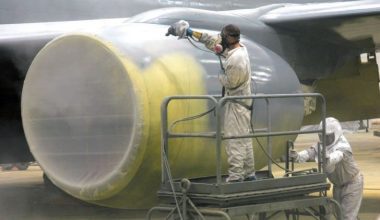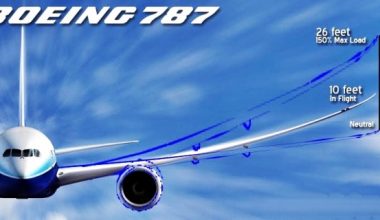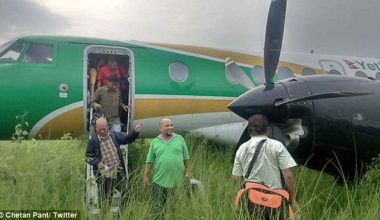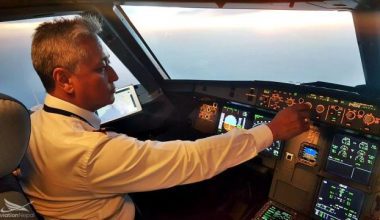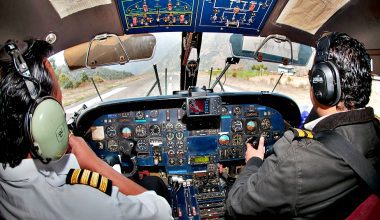Things Airlines Passengers Should know

The airplane has become the first option to travel for many people due to its unique character. First of all, airplane is more convenient and comfortable, fastest method of transport, It`s One of the Safest Ways to Travel, Can Enjoy the View.
The International Air Transport Association (IATA) released the IATA Airline Industry Forecast 2013-2017 showing that airlines expect to see a 31% increase in passenger numbers between 2012 and 2017. By 2017 total passenger numbers are expected to rise to 3.91 billion—an increase of 930 million passengers over the 2.98 billion carried in 2012.
As the Air traffic is increasing day by day, it is must that the air passenger should know about some technical and non-technical points.
Why do we turn off cell phones?
“Please turn off all personal electronic devices, including laptops and cell phones.”
This is an announcement which we have heard numerous times. Many of us do not even hear it anymore; the first three words automatically trigger a mechanical action: switch everything off. Some of us, the skeptical ones, still try to trick the system and leave personal electronic devices on.
The truth is that portable electronic devices, such as mobile phones, compact disc players, and remote-controlled toys, can emit powerful electromagnetic radiation that can muck up an aircraft’s navigation and communication systems and actually endanger a flight. Airline telephones, on the other hand, transmit radio signals to and from antennas mounted externally on the aircraft, and such phones meet Federal Aviation Administration specifications that prevent them from interfering with the aircraft’s radio and navigation systems. Portable electronic devices do not currently meet such FAA requirements.
The modern airliners are quite complex. Not only with mechanical systems. But electrical and electronic systems too. Avionics, sensors and electronics systems that feed the sensors all play a part in a typical flight. Radios for navigation and communications. ILS, VOR, ADF, DME, GPS, TCAS, LRRA, ELT, ACARS, transponders and communications radios and all this other wonderful technical junk. This all helps the crew to guide the aircraft, communicate with the ATC tower, and help it to avoid smacking into other aircraft.

These systems largely rely on radio signals at certain frequencies/wavelengths coming in from external sources to help them find their way. If you look at the exterior of a typical commercial airliner, you can see all the different antennas sticking out. The have different sizes and shapes depending on which frequency they are optimized to pick up. If you look closely you can see a few little antennas sticking out at various different parts in the plane.

As you can see there’s a lot of antennas on a commercial airliner and even smaller aircraft too. you can see that some of these antennas are located closer to the cabin where passengers are seated rather than closer to the cockpit. Even though their input is wired into cockpit systems. So a passenger’s phone is in a closer place where it can cause an interference. But one thing about these systems is that they could be sensitive. A cell phone puts out radio radiation at a number of different frequencies. While one or two devices might not interfere, a lot of them could interfere with aircraft pilot-ground communications, which is critical during takeoff and landing, when the aircraft is most vulnerable.
If there is an emergency, the pilot needs to have clear communication with the Air Traffic Controller for emergency instructions and other necessary coms. Cell phones are the biggest RFI and EMI (electromagnetic interference) offenders; even though they’re shielded, they still emit quite a bit of interference, and cell phones by their nature could theoretically directly overlap an emergency com frequency that the pilot is using.
On another note, any fuel leak vapors during takeoff and landing could also be set off by the use of personal electronic devices if the plane were forced to abort the takeoff and a tank ruptured, though RFI is the primary concern. Same if the plane had a hard landing that resulted in a wing tank rupture and subsequent fuel leak. It’s the same reason you’re asked to turn your cell phones off while fueling your car.
The other reason the airlines want you to shut off your electronic device is that it’s a distraction during a phase of flight where they might need your attention. Headphones interrupt what you might hear during an emergency, hand held games have a way of absorbing people’s attention, etc. Take the US Air flight that landed in the Hudson, for example. That whole ordeal lasted only a few minutes and the crew doesn’t have time to repeat themselves to people who weren’t listening.
Why open up the window shades before takeoff and landing?
Lifting the shades on the windows during take-off and landing might seem like a trivial ask to many airplane passengers. The window shades are to be opened for the security purpose in the event of an emergency evacuation. Part of the emergency procedures for the crew before opening a door for evacuation is to examine the condition of the ground and aircraft outside the door for blockage, leaking fuel, and especially fire. The crewmember won’t open the door and allow passengers to slide to their deaths if the situation is dangerous.
The window shade opening is a part of a long process to prepare the cabin for sudden (unexpected) emergencies. Because cabin crew have only 90 seconds to evacuate all passengers in case of emergencies. The process of evacuation itself should not take more than 90 seconds regardless of the size of the aircraft or the number of passengers. So to make the evacuation possible in 90 seconds cabin crew and other airlines staff will prepare every flight in advance to make this possible. One example is the emergency exits, only healthy adults are allowed to occupy these seats, they are also required to read the safety card for emergency exits to make them prepared in case of emergencies to help the cabin crew. They are called ABPs (Able-Bodied-Persons). This is just one example.
Anyway window shades opening is a small part of a long preparation process. Passengers are asked to open window shades before take offs and landings because these are considered to be critical times in aviation. Many things can go wrong during these times (most accidents do happen during take offs or landings), so people are asked to open window shades along with other things (seats in upright position, people seated and buckled etc.) to make everything prepared as if the plane were in emergency. In case something goes wrong things will be ready in advance so cabin crew can easily evacuate people in the short period of 90 seconds.
Specific reasons behind the window shade opening include:
- Passengers are curious, hence they are perfect extra eyes to see if something goes wrong out there. Usually passengers report stuff right away.
- In case of sudden emergencies, every second counts. Therefore, if shades are open crew can easily see outside conditions to help them in planning the evacuation (which doors to use for evacuation etc.).
- In case of emergency (which is more likely during take offs and landings) people should be prepared just in case. So during daytime, opening window shades and putting cabin lights to full makes the eyes used to sunlight so if something goes wrong and passengers need to be evacuated there will not be sudden change in light contrast which might lead to temporary blurred vision. Same thing at night flights, window shades are open and cabin lights are dimmed.
- It helps ground emergency personnel outside to see the inside of the cabin.
These rules might be different from one airline to another, but in general almost all airlines require their crews to make sure of the window shades during take offs and landings. They also add it in the preparation announcements prior to take offs and landings. Passengers are also asked to fold up their tables and straighten their seats during take-off and landing in the case of an emergency to ensure a quick exit.
Why are cabin lights dimmed for take-off and landing?
Before landing and taking off, the lights inside commercial aircraft are greatly reduced. The custom of dimming lights for landing and taking off is a security measure which has long perplexed many airplane passengers. Many travelers are unclear about the reason behind doing this. It is of course not to force those on board to put down their books or phones and pay attention to airline staff.
Take-Off and Landing are the two most critical phases of flight and thus, every additional step to ensure survivability, be it even just adjusting the light, is taken.
The purpose of dimming lights for take-off and landing is to ensure the cabin environment matches the exterior environment This is done in preparation for a potential evacuation, especially if the cabin lights fail, your eyes are already accustomed to the light setting and you do not require additional valuable seconds for adjustment to a possibly darker or brighter environment. The lights are usually adjusted at dusk, night or dawn to match the exterior environment.
If the cabin lights do not fail during an emergency, the dimmed light also makes it easier to identify the “EXIT” signs which illuminate and make the guidance lighting on the floor easier to follow. The bright emergency lighting is more prominent to identify when the cabin light is dimmed, saving valuable seconds as the aircraft is evacuated.
Why candy in airplane?
Some of the problems of being in an airplane are caused by pressure differences. Airplane cabins are pressurized during flight but operate at lower pressures at cruising altitude than they do on the ground. As the plane ascends or descends you might experience the changing pressure as airplane ear, a painful sensation in your inner ear because the air high above the surface of Earth is less dense than air near the surface.

The eustachian tubes in the ear are there to equalize pressure between the inner ear and the outside world. It connects the ear to the nose and mouth but if it’s blocked, changes in cabin pressure create an inequality with the pressure in your middle ear. This inequality places stress on your inner ear, causing the pain you feel during airplane ear. This causes not only the discomfort you feel before your ears “pop,” but also a decrease in hearing ability, because the pressure on your ears drums makes the sound harder to transmit.
Chewing, swallowing or Sucking any type of candy can help equalize the pressure, relieving discomfort, although it’s not the candy itself that helps. The actions of chewing and swallowing use muscles around the Eustachian tube, potentially opening its internal exit at the back of your nasal cavity. Doing this allows air to move into or out of the Eustachian tube, helping to equalize pressure and easing both the stress on your inner ear and the associated discomfort. As pressure equalizes you might feel a “popping” sensation.
Although you can’t do anything about the changes in air pressure involved in taking a flight, you can take steps to reduce the likelihood of experiencing airplane ear. Ensure that you stay hydrated during the flight by drinking plenty of water. This will reduce the chance of the tubes in your nasal passages and inner ear becoming irritated and blocked. If you often suffer from airplane ear, the Centers for Disease Control and Prevention suggests taking an anti-inflammatory or oral pseudoephedrine around a half hour before your flight to alleviate the symptoms.
Why is liquor from the outside not allowed in the cabin baggage on a flight?
This is part of the entire security process and is due to the Three British-born Islamic fanatics planned to use liquid explosives disguised as soft drinks to blow at least seven flights out of the sky and cause carnage to rival 9/11 in the U.S.
The liquids rule is a result of a plot foiled in 2006 (2006 transatlantic aircraft plot). The 2006 transatlantic aircraft plot was a terrorist plot to detonate liquid explosives, carried on board airliners travelling from the United Kingdom to the United States and Canada, disguised as soft drinks. The plot was discovered by British police during an extensive surveillance operation. As a result of the plot, unprecedented security measures were initially put in place at airports. The measures were gradually relaxed in the following weeks, but passengers are still not allowed to carry liquid containers larger than 100 ml onto commercial aircraft.
So the idea to allow carrying of 100 ml liquid is because 100 ml liquid is a small enough amount that it would be impracticable for a terrorist group to smuggle a large enough volume of potential liquid explosives onto an airplane to do serious damage, and if you had a large number of people trying to combine liquids it would attract the attention of other passengers and the flight attendants.
What is the little hole in airplane windows there for?

Every single window on the airplane has the small hole. More officially, it’s called a breather hole and it’s used to regulate the amount of pressure that passes between the window’s inner and outer panes.
In short, the system ensures that the outer pane bears the most pressure so that if there were a situation that caused added strain on the window, it’s the outside panel that gives out (meaning you can still breathe).
Since pressure changes in the cabin during the flight, it’s also necessary to equalize the pressure between the window panes, and hence the little hole. A hole of that size would not jeopardize pressurization even if the outer pane blew out. Note the label “Breather Hole” in the diagram below.

There is a rubber seal around the outside of the two panes so it would be a bit of a pain to open a hole to cavity from the side. Apart from that, the windows are pretty tight together and by keeping it where it is there is nothing in the vicinity such as dust that could gradually be pulled in.
Since the air in between the panes is colder, it’s not unusual to see ice crystals forming around the hole as the more humid cabin air enters the cavity.
The breather hole also keeps the window fog-free by wicking moisture that gets stuck between the panes. After all, half the fun of an airplane ride is the in-flight scenery shots. Mystery solved.
Articel By :Yadav Khagendra Kumar
Himalaya Airlines Pvt. Ltd.

